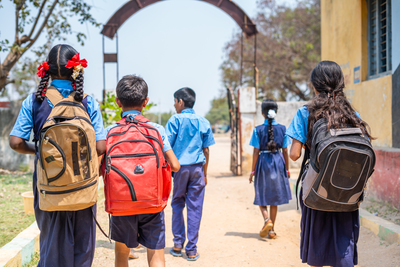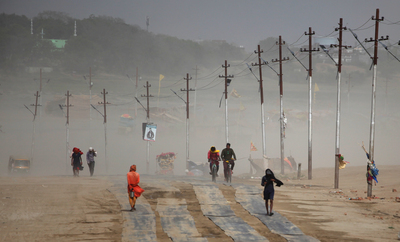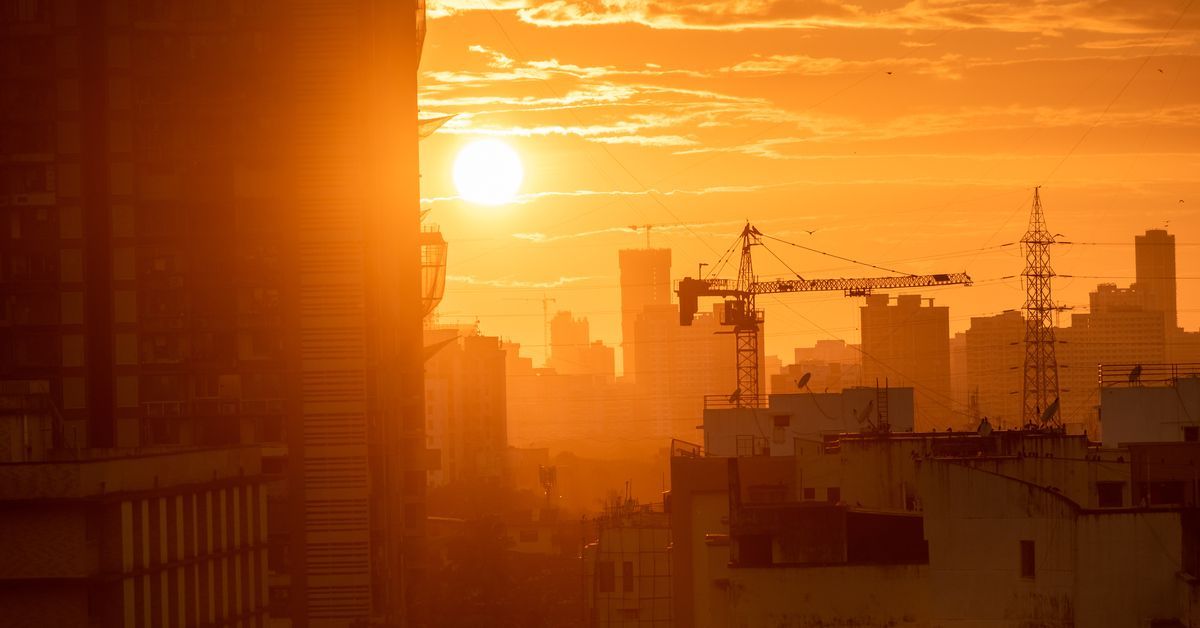Extreme Heat in India: A Crisis on the Rise
Teevrat Garg, economist at the School of Global Policy and Strategy, has authored a series of studies revealing the myriad consequences extreme heat has on South Asia
Published Date
Story by:
Media contact:
Share This:
Article Content
As global temperatures continue to rise, India is grappling with increasingly severe heat waves. As early as April, many Indian cities, including New Delhi, the capital, have experienced record temperatures above 115 degrees Fahrenheit.
Recurring heat waves in recent months have killed more than 100 people including dozens of poll workers during India’s recent six-week election. Scorching temperatures are also responsible for over 40,000 suspected cases of heat stroke.
Extreme heat poses unique challenges to the world’s largest democracy due to its geographic, economic and infrastructural context. Located in the tropical belt, India and neighboring countries experience significant heat and the impact is exacerbated by factors that differ greatly from those in wealthier nations.

“While countries like the United States have extensive networks of air-conditioned spaces and robust safety nets, India's capacity to mitigate the effects of heat waves is limited,” said Teevrat Garg, associate professor of economics at UC San Diego’s School of Global Policy and Strategy, whose research focusses on environmental policy and energy transitions in low-and middle-income countries. “In cities like New York and Chicago, heat advisories prompt the activation of cooling centers in public libraries and schools, which often shut down to protect children. Conversely, in India, air conditioning remains a luxury, accessible to only a small fraction of the population.”
The penetration of air conditioning in India is hampered by the high costs and the unreliability of the electricity grid. On the hottest days, when the demand for electricity peaks, the grid often becomes congested, leading to frequent power outages. This makes owning an air conditioner a less effective adaptation strategy if the power supply is not consistent, according to Garg, who is a faculty affiliate with the campus’s 21st Century India Center and Deep Decarbonization Initiative

An expected link between outdoor occupations, heat exposure and children’ test scores
A significant portion of India's workforce is employed in outdoor occupations, such as agriculture and construction. Unlike office workers who can stay indoors, these laborers face direct exposure to extreme heat.
To add to that, India's large population of subsistence workers cannot afford to miss a day of work, even in extreme heat. Many live hand-to-mouth, relying on daily earnings to buy food.
Garg’s research finds an unexpected consequence of extreme heat’s impact on reduced work for agricultural laborers —lower test scores for children. While there is ample evidence that heat impacts cognitive functions, a study by Garg and co-authors published in Journal of the Association of Environmental and Resource Economists found that hot days during growing season in the previous year, was affecting students’ academic performance in the current year, rather than heat in the non-growing season.
“We know that heat has a direct effect on the brain so it shouldn’t matter whether heat happens in the growing season or the non-growing season,” Garg said. “Either one should have the same effect on academic performance, but the fact that we saw all of these effects coming from the growing season told us that like these impacts are really being driven by an agricultural income mechanism.”
Essentially, children in India had lower test scores likely because their parents experienced income loss due to lower crop yields.
“It could be because parents couldn’t afford to pay for books and other school supplies, or put as much food on the table, so children may be hungrier,” Garg said.
The paper underscored the importance of social protection programs in helping vulnerable populations cope with climate-induced stresses.
Specifically, the National Rural Employment Guarantee Scheme (NREGA), a major workfare program in India, was found to significantly weaken the link between high temperatures and reduced test scores. By providing a safety net for the poor, NREGA attenuated the negative effects of temperature on test scores by 38%.

No amount of money can buy relief when working outdoors in extreme heat
Another study from Garg also evaluating extreme heat’s impact on outdoor laborers revealed that no matter how motivated employees may be, they will reach a breaking point at certain temperatures.
In a field experiment in neighboring Indonesia, workers were randomly assigned to perform duties in forested and deforested areas. The black globe temperature—which measures how hot it feels in direct sunlight—in deforested areas was 30 to 50 degrees warmer compared to forested areas.
Not surprising to Garg and coauthors of the study published in Nature Communications, workers in deforested areas had to take many more breaks compared to those working in much cooler, forested settings. However, the authors were surprised to find that when the workers in hot settings were paid twice as much to perform each task, there was no difference in productivity compared to workers getting base pay in the same setting.
“What that tells us is that reduced productivity during extreme heat is not behavioral preference—it’s not that people are working less hard because they’re just uncomfortable, heat actually represents a binding constraint on productivity," Garg said. “People literally cannot work harder in these extreme conditions.”

Heat not only hurts productivity, but it’s also bad for collaboration
Garg and Elizabeth Lyons, professor of management at the School of Global Policy and Strategy, wanted to explore how warmer conditions impact cooperation between team members, an area previously unexplored. In a field experiment in Bangladesh, their working paper focusses on the varying impacts of warm conditions on individual and team performance working in indoor settings and in cognitively demanding occupations.
“These occupations are increasingly located in high-temperature regions with limited climate control, like India, and neighboring countries in South Asia,” Garg said.
The study found that individual computer programmers working in warm rooms performed comparably to those in control rooms. However, teams in warm rooms significantly underperformed relative to teams in control rooms and individuals in both temperature settings. Teams in warm environments were less likely to make progress on tasks.
“There's a breakdown in communication and interaction between workers when it's hot,” Garg said. “When it's hot, you're more irritable and annoyed and therefore less likely to work collaboratively with people, which is essential for creativity and innovation.”
Climate change, decarbonization and sustainability are among the 21st Century India Center’s research focus areas, as increasing temperatures pose unique difficulties to the country. To read more, go the 21st Century India Center website.
Learn more about research and education at UC San Diego in: Climate Change
Share This:
Stay in the Know
Keep up with all the latest from UC San Diego. Subscribe to the newsletter today.




